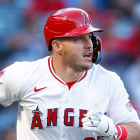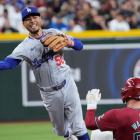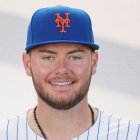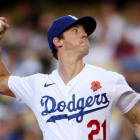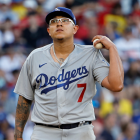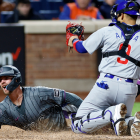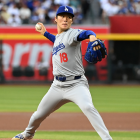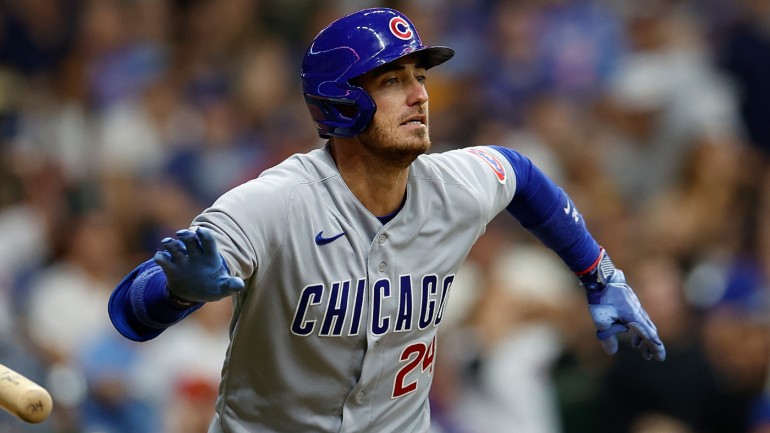
The World Series starts Friday, but 28 Major League Baseball teams are now shifting their attention to the offseason. Free agency won't officially begin until five days after the World Series concludes, but teams are already canvassing the market and piecing together plans and contingencies.
With that in mind, CBS Sports decided this would be a prime occasion to roll out the first half of our free-agent rankings. Below, you'll find the top 25 players available on the market based on how things stand. Later, with the official start of free agency, we'll publish the rest of the top-50 list, as well as make any needed additions or subtractions based on extensions, qualifying offers, and unexpected option decisions.
As always, these rankings are determined by a combination of expected average annual value and impact. They are formed through firsthand analysis; conversations with scouts, analysts, and other front-office types; and historical research. In an attempt to undermine the hours spent doing serious work, we've also included a one-line summary of the player's profile and a few potential suitors. Please do not be the person who complains about those; every player on here has more than two or three plausible landing spots, and while we try to mix up which teams we name on similar players, that aspect of this piece is not particularly high on the priority list.
Now, let's get to it.
1. Shohei Ohtani, two-way player
- The short version: The most talented player in baseball history will soon become its richest.
- Potential suitors: Dodgers, Padres, Giants
Welcome to the most anticipated free agency in league history. Ohtani will not pitch next year after undergoing elbow surgery to correct a torn ulnar collateral ligament, yet he's expected to be in someone's lineup as a DH come Opening Day. (He's slated to return to the mound in 2025.) Ohtani is certain to receive a mammoth, record-breaking payday in the interim. Why wouldn't he? He's ranked in the top 10 in both ERA+ and OPS+ since debuting, and along the way has single-handedly shifted the Overton Window on two-way players. It's fair to wonder how his workload will change in the future -- perhaps he someday shifts to a relief role? -- but that's the risk you gladly stomach when you're blessed with the opportunity to sign the kind of anomaly who invokes references to Leon Day, Bullet Rogan, Martín Dihigo, and Babe Ruth. "Destiny is the music of the improbable," Kenneth Patchen once wrote. "Were it otherwise, almost anyone could exist." Make sure you find a way to enjoy Ohtani's tune this winter, even as the noise around him ramps up.
2. Yoshinobu Yamamoto, RHP
- The short version: Yamamoto has an unmatched combination of youth, track record, and talent.
- Potential suitors: Yankees, Mets, Phillies
Yamamoto is a five-time All-Star, a three-time ERA champion, and a two-time Triple Crown champion in the NPB. Last year, he won the Pacific League's equivalents of the MVP and Cy Young Awards. He is, in our estimation, the best pitcher in the world to have never suited up for an MLB team. Oh, and he just celebrated his 25th birthday in August. Talent evaluators have raved to CBS Sports about Yamamoto for years, citing his high-grade command over a good arsenal as the most impressive part of his game. He throws a mid-90s fastball about half the time, complementing it with a swing-and-miss splitter and a high-spin curveball. Each of those pitches went for a strike at least 65% of the time this season, reinforcing the notion that he paints with a fine-tip brush. There's more than enough precedent to feel confident in Yamamoto making an easy adjustment to the MLB ball and schedule. In turn, there's no reason for teams to hold back in their bidding, rendering it highly likely that he shatters Masahiro Tanaka's record $155 million contract.
3. Cody Bellinger, CF/1B
- The short version: Bellinger produced big numbers despite so-so ball-tracking data.
- Potential suitors: Cubs, Giants, Red Sox
There are three parts to a magic trick. First, showing something to the audience. Then, making that something disappear. Finally, making that something reappear. A lot of magicians use rabbits, coins, or planted volunteers. The baseball-minded among them, such as Bellinger, use their offensive output. He began his career in brilliant fashion, culminating in winning the 2019 National League Most Valuable Player Award. That production then vanished, to the extent that he was non-tendered last winter by the Dodgers. Bellinger has pulled off the final leg of the trick this season, reestablishing himself as a well-above-average hitter, albeit in inexplicable fashion. His ball-tracking data does not align with what you would expect from someone who once threatened 50 home runs: his average exit velocity puts him in company with Jean Segura, Yan Gomes, and Miguel Rojas. The secret to Bellinger's reemergence seems to be that he traded quality of contact for quantity of contact. It worked this season. Teams must now decide how confident they are in Bellinger's new trick, or if the sustainability of his resurgence is a matter of magical thinking.
4. Matt Chapman, 3B
- The short version: Elite third baseman with big power and questions about his hit tool.
- Potential suitors: Dodgers, Blue Jays, Yankees
The reprise of this free-agent class is "yes but." It applies to Shohei Ohtani's UCL, Blake Snell's command, Cody Bellinger's ball-tracking data, and so on. In Chapman's case, it applies to his hit tool. He's a brilliant defensive third baseman with elite strength and plate discipline. He's also extremely ineffectual against elevated pitches, resulting in a well-below-average in-zone contact rate. That, plus Chapman's tendency to hit pop-ups, explains why he's so streaky. (To wit, his April OPS this season was nearly higher than the sum of his May and June OPS.) The marketplace is largely without good infielders, so someone will take the plunge and hope that he can deliver a few more years of well-above-average play. There's just more downside risk than his otherwise strong foundational skills would suggest.
5. Aaron Nola, RHP
- The short version: Nola is steady even if his ERA isn't.
- Potential suitors: Phillies, Cardinals, Diamondbacks
Nola has an inverse Saberhagen thing going on. He's been excellent in recent even years and only average in odd years. There's no predictive power to be found in that observation, but noticing patterns in the wild sure pleases the lizard brain. Anyway, several veteran talent evaluators expressed that they would prefer to sign Nola over Blake Snell no matter the financial component. The reasoning is straightforward: Nola's ERA has bobbed up and down over the last handful of seasons, but he throws a lot of strikes and has required just one stint on the injured list since 2018. We suspect teams will be interested in seeing how Nola performs in front of a different defense, too.
6. Blake Snell, LHP
- The short version: Great results plus bad command equals a polarizing pitcher.
- Potential suitors: Phillies, Mets, Diamondbacks
Here's a complete list of pitchers who have won the Cy Young Award in each league: Gaylord Perry, Pedro Martinez, Randy Johnson, Roger Clemens, Roy Halladay, and Max Scherzer. Snell might join that group this winter, even if it feels wrong to see his name in that class. There's no knocking his bat- or barrel-missing abilities, but his control leaves a lot to be desired. He threw fewer than 60% strikes this season, and his walk rate was nearly one of the 20 highest posted by a starting pitcher in the Expansion Era. The central conflict in Snell's game is that he's as chase-dependent as any starting pitcher -- fewer than one-third of his secondary pitches were located within the zone -- yet his coercive ability grades as below-average statistically. That combination leads to a lot of deep counts and a lot of early exits; this season marked the second time that he's a) started 30 or more games and b) cleared 140 innings. Snell's stuff has allowed him to overcome, and for all we know, that'll continue to be the case. Still, you can't blame anyone who develops the collywobbles when they think about the left-tail possibilities of his skill set.
7. Eduardo Rodriguez, LHP
- The short version: Rodriguez remains a mid-rotation starter after two weird years in Detroit.
- Potential suitors: Phillies, Yankees, Mets
It's a shame most people will remember Rodriguez's season for what didn't happen -- the deadline deal to the Dodgers that he vetoed using his no-trade clause -- rather than what did: him reasserting himself as an above-average starter. Rodriguez showed improved velocity (up about half a tick) and bat-missing ability throughout the 2023 season. He shuffled his repertoire, too, ditching his sinker to lean more heavily on a three-pitch mix that included his low-90s four-seam fastball, a cutter he can command to both sides of the plate, and a changeup that led the way in whiffs. Rodriguez will turn 31 in April, and he seems like a reasonably safe bet to remain a mid-rotation starter for at least the next few seasons.
8. Lucas Giolito, RHP
- The short version: Post-deadline blues likely cost Giolito some green.
- Potential suitors: Padres, Dodgers, Rays
If only Giolito had access to a neuralyzer, he could erase any memory teams had of him after he was traded to the Angels. (In turn they would remember only when he was with the White Sox, or forgive us, when he was a man in black.) Speaking of forgetting things, Giolito used his fastball less and less often as the season wore on. He leaned more on his backspinning changeup, ostensibly in response to his bout with gopheritis. Giolito is on the bright side of 30 and he isn't far removed from receiving Cy Young Award consideration in three consecutive seasons. That combination should help teams talk themselves into him being a good rebound candidate, albeit for a second consecutive offseason.
9. Jordan Montgomery, LHP
- The short version: Montgomery is a no-frills mid-rotation starter.
- Potential suitors: Cardinals, Yankees, Rangers
Montgomery, the a key part of the Rangers' World Series run, is the starting pitcher version of cottage cheese. He's not exciting. No one looks forward to watching him. You don't want your team making big plans around him. But he's reliable, and he can be part of something good if he's put into the right situation. To be clear: none of this is meant to insult Montgomery. His high-grade control and durability have afforded him three consecutive good seasons. He's just better served when he's not cast as the main attraction.
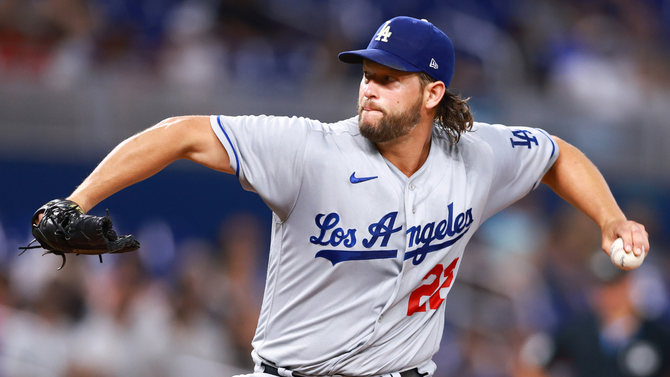
10. Clayton Kershaw, LHP
- The short version: Same old same old.
- Potential suitors: Dodgers, Rangers
Kershaw -- despite his meltdown in NLDS Game 1 against the Diamondbacks -- remained a highly effective starter despite losing some oomph from his fastball late in the year. By now, you ought to know what you're getting from him workload-wise. He's not taking the ball every time through the rotation, nor is he going to lead a staff in frames. He's started 22 or 23 games in each of the last three years, and he hasn't cleared 140 innings since 2019. You have to fill in the gaps, but that's a fair trade given the quality of his work. As for Kershaw's destination … we perform this song and dance every winter, only for him to return to the Dodgers on yet another one-year deal. We doubt this time ends differently.
11. Kevin Kiermaier, CF
- The short version: Outstanding defender, but questions abound about health, bat.
- Potential suitors: Red Sox, Twins, Marlins
Kiermaier is a freaky-deaky athlete who plays center field with appreciable elan. The main drawbacks to his game have remained the same: he's certain to miss games (especially as he ages further into his mid-30s), and he's not certain to be an asset offensively. That said, Kiermaier did just put forth his best offensive effort in more than a handful of years. We'll note that the gains he made with both his strikeout and walk rates are not supported by underlying metrics, calling into question whether or not they'll prove sustainable heading forward. He should still do better for himself this winter than last.
12. Sonny Gray, RHP
- The short version: The market forecast is more sunny than gray.
- Potential suitors: Twins, Cardinals, Diamondbacks
While other second- and third-tier free-agent starters had tumultuous seasons, Gray quietly pieced together another high-quality effort. (He also, no doubt, inspired a panicked phone call from his agent after he suggested he might retire this winter.) Gray doesn't throw hard and he'll turn 34 this offseason, but since 2019 he's posted a better ERA+ than Luis Castillo, Zac Gallen, Zack Wheeler, and many others who are held in higher public regard. Be that as it may be, we suspect that Gray could be in line to receive a deal similar to the three-year, $63-million pact that Chris Bassitt inked last offseason.
13. Rhys Hoskins, 1B
- The short version: Missed year does no favors for slugging right-right first baseman.
- Potential suitors: Phillies, Brewers, Padres
Hoskins missed the season after tearing his ACL in March. Unfortunately, he was already facing a dicey free-agent market before the injury. For as good as Hoskins is, and he's amassed a 120 OPS+ or better in five of his six seasons, he's a right-right first baseman on the stormy side of 30. Teams needn't look further than José Abreu to see how quickly that profile can crater. (To be fair, Abreu is/was significantly older than Hoskins.) Between the injury and the market's tepidness for the type, Hoskins would seem like a reasonable candidate to accept a qualifying offer.
14. Josh Hader, LHP
- The short version: The best reliever on the open market thanks to an oddball sinker.
- Potential suitors: Rangers, Phillies, Diamondbacks
Hader has a sinker like none other: it's thrown with the standard grip, yet it possesses the backspin of a four-seamer. Predictably, perhaps, his sinker led the majors in induced vertical break (min. 200 thrown) despite him releasing the ball several inches lower than anyone else in the top 10, creating an unholy optical illusion that batters have not solved on a consistent basis. Plunking down $20-plus million on a closer isn't for everyone, and some suitors might raise their eyebrows at Hader's strikeout and walk rates moving in the wrong direction. It's hard to knock the results, however, and someone will pay up.
15. Jung Hoo Lee, CF
- The short version: Lee's secondary and bat-to-ball skills are MLB-ready.
- Potential suitors: Giants, Padres, Angels
Lee fractured his ankle in July, ending his season and hindering his ability to further audition for MLB scouts. He's regarded as a plus runner and defender, and he's demonstrated appreciable bat-to-ball skills. Lee had a 91% contact rate this season, including a 97% contact rate against fastballs, according to data obtained by CBS Sports. He's not a big-time slugger (23 of his 65 career home runs came in 2022), and that puts the onus on him making a full recovery so that he can contribute in the field and on the basepaths. Teams always have concerns about how KBO hitters will fare against MLB pitching. The recent success of Ha-Seong Kim, Lee's former teammate, should provide them with some peace of mind.
16. Jeimer Candelario, 3B/1B
- The short version: Nothing flashy, but he can hit and play each infield corner.
- Potential suitors: Red Sox, Diamondbacks, Angels
Candelario is a fastball hunter who has posted a well-above-average OPS+ in three of the last four seasons. He set new career-highs in both home runs and stolen bases in 2023, but he's not the most dynamic power-speed threat. Defensively, he seems likely to return to third base after playing first base for the Cubs out of deference to Nick Madrigal. Candelario's arm is stretched at the hot corner, so it's possible he makes the move to first on a permanent basis at some point in the future.
17. Harrison Bader, CF
- The short version: Outstanding secondary skills are obscured by substandard bat.
- Potential suitors: Red Sox, Tigers, Giants
Bader is a bigger thief than any generative artificial intelligence model. His plunder comes in two forms: 1) stolen bases, of which he set a new career-high in 2023, and 2) would-be hits taken away from the opposition. Bader is a demon in center thanks to his well-above-average speed and arm strength. He's not nearly as enticing at the plate, where he launches the ball at about the same angle as Jorge Soler, Matt Chapman, J.D. Martinez, and a slew of other sluggers who make much, much more authoritative contact. Bader would probably be better off flattening his swing plane and leveraging his wheels. A weak center-field crop should still leave him in demand.
18. Jorge Soler, DH
- The short version: Soler's gains made him a more well-rounded hitter, though hitting is all he does.
- Potential suitors: Giants, Mariners, Angels
Soler joined an exclusive club this year, becoming the third Marlins player since Gary Sheffield in 1996 to launch at least 35 home runs. (The others, in case you couldn't guess, were Giancarlo Stanton and Marcell Ozuna.) Soler's power has never been in doubt, as he's reliably ranked near the top of the league in maximum exit velocity. The bigger revelation was that he improved upon his strikeout and contact rates for the second time in a handful of years, resulting in career-best marks in both categories. Soler is never going to be confused with Miami teammate Luis Arraez, but his improved ability to put the bat on the ball combined with his elite strength and above-average strike-zone command has made him a more well-rounded hitter -- one we suspect a team will be more than willing to sign for multiple seasons.
19. Joc Pederson, DH
- The short version: Isn't for everyone, but he can hit right-handers.
- Potential suitors: Brewers, Rangers, Mariners
Pederson, the youngest member of the DH quartet, wasn't able to replicate the top-line success he had in 2022. Even so, there was a lot to like about his performance. He continued to blister the ball, ranking in the top 8% of the league in both average and maximum exit velocity. He walked more than he had since his earliest seasons, and he did that while reducing his strikeout rate. Pederson isn't someone who should be allowed to play defense or take important at-bats versus left-handed pitchers, but he could bat 15-20% above the league-average mark next year, and that's worth something.
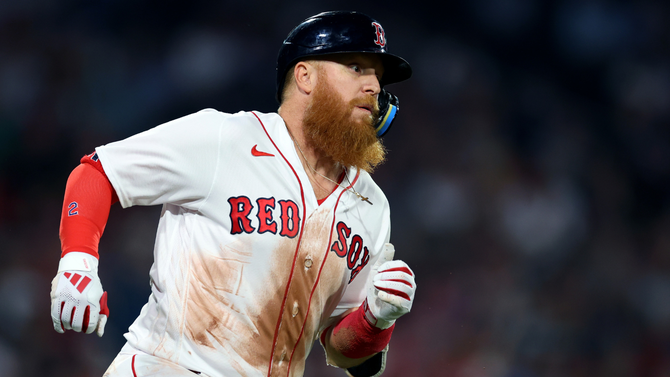
20. Justin Turner, DH
- The short version: Bat and zone control remain top-notch even as age and miles limit secondary value.
- Potential suitors: Dodgers, Marlins, Mariners
At this point in Turner's career, it's safe to write him off as a factor both defensively and on the basepaths. That's OK because he remains a force at the plate. Turner is highly adept at making contact and commanding the zone, and he's clearly still capable of burning mistakes. Age- and health-related caveats apply, but Turner showed no problems with velocity -- and it wasn't because he cheated and left himself vulnerable to offspeed and secondary offerings. If he wants to keep playing, he should find a welcoming home somewhere as a designated hitter and occasional first baseman.
21. J.D. Martinez, DH
- The short version: Advanced age and increased whiff rate cast some justifiable doubt on future performance.
- Potential suitors: Dodgers, Marlins, Mariners
This ranking may seem unkind given Martinez just put forth another monster season at the plate. Teams make a point of paying for what is and what will be, not for what was -- that's important here because they may find a few hints of decline in Martinez's game as he heads into his age-36 season. Most notably, he struck out a career-worst rate, a development fueled by him whiffing on more than 45% of his swings on non-fastballs. Martinez still hit the ball extremely hard when he connected, and that allowed him to overcome the uptick in empty swings and strikeouts. Perhaps that will remain the case for at least another season. You can understand, though, if teams find themselves preferring some of the market's other DH options.
22. Tim Anderson, SS
- The short version: A poor shortstop market may obscure a poor individual season.
- Potential suitors: White Sox, Marlins, Giants
Last spring, Anderson was identified by rival talent evaluators as the summer's top potential shortstop trade candidate. Alas, other teams had cooled on him by the time the deadline rolled around. He stayed with the White Sox and kept hitting everything into the ground while showing reduced speed. (We'll note that didn't stop him from grading as a plus baserunner statistically.) Anderson's power has evaporated over the last two seasons, and he could hit only fastballs in 2023. Factor in his glove work, and he's going to need to return to form offensively to keep getting starting assignments. The free-agent shortstop market is brutal, and we could see teams writing off Anderson's season as being compromised by injuries.
23. Jordan Hicks, RHP
- The short version: Hicks' results finally match his high-leverage stuff.
- Potential suitors: Phillies, Giants, Diamondbacks
Hicks appeared close to being designated for assignment after a rough introduction to the season. He then executed a nifty turnaround, doing some of the best relief work in the business the rest of the way. Hicks remains a flamethrowing sinkerballer who suppresses quality of contact. The main differences this year were that he threw a career-high rate of strikes and missed more bats than usual. Hicks' track record isn't as good as you'd think (this was the first time since 2019 his ERA+ cleared 90), but the arm talent is undeniable and for once so were the results. That should be enough to make him an appealing target.
24. Teoscar Hernández, OF
- The short version: Bat-first corner outfielder who relies entirely on loud contact.
- Potential suitors: Marlins, Brewers, Angels
It's fair to write that Hernández has a limited skill set. He knows how to use his barrel, with about half his batted balls clocking in at 95 mph or faster. Otherwise? He doesn't mind the strike zone and he often whiffs. Accordingly, he's a threat to post horrendous strikeout-to-walk ratios. Hernández's defensive work has historically graded as subpar as well, leaving him as a bat-first corner outfielder who needs to amass 25-plus home runs and a .330-plus BABIP to stay on the right side of the average line. Hernández has pulled off the feat often enough to think he can do it again. He'll need to because there's no safety net.
25. Kenta Maeda, RHP
- The short version: Age and injury history are scary, but he still gets results
- Potential suitors: Rays, Mets, Padres
Maeda, 36 come April, has experienced his share of physical ailments during his career in the States. He's produced whenever he's been healthy, however, and that's good enough to rank in the top half of this class. Maeda's approach is all about accentuating his strengths and hiding his weaknesses. He doesn't have a good fastball, so he throws it the third-most often of his pitches, behind his splitter and slider. It works for him, even if it may not work for others. Maeda will likely have to settle for a short-term arrangement. Whatever team lands him should be adding at least a league-average starter to their rotation, albeit for an indeterminable number of games.














